18 Ways To Look After A Stray Cat Without Bringing Them Indoors

Stray cats often need our help, but not everyone can bring them inside their homes. Maybe you have allergies, space limitations, or other pets that wouldn’t get along with a newcomer.
The good news is that you can still make a huge difference in a stray cat’s life without opening your front door. These practical methods will help you care for neighborhood strays while maintaining healthy boundaries.
1. Build A Simple Outdoor Shelter
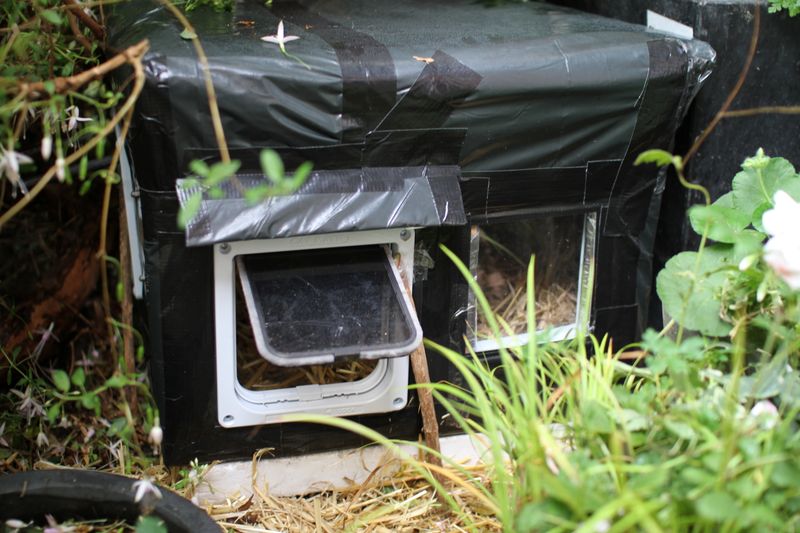
Cats need protection from rain, snow, and cold temperatures. A plastic storage bin with a doorway cut into it can become a cozy refuge when lined with straw (not hay or blankets, which retain moisture).
Position the shelter away from the ground using bricks or pallets to prevent cold from seeping up from below.
Make sure the entrance faces away from prevailing winds. The shelter should be just big enough for the cat to turn around in – their body heat will keep the space warm.
2. Create A Feeding Station
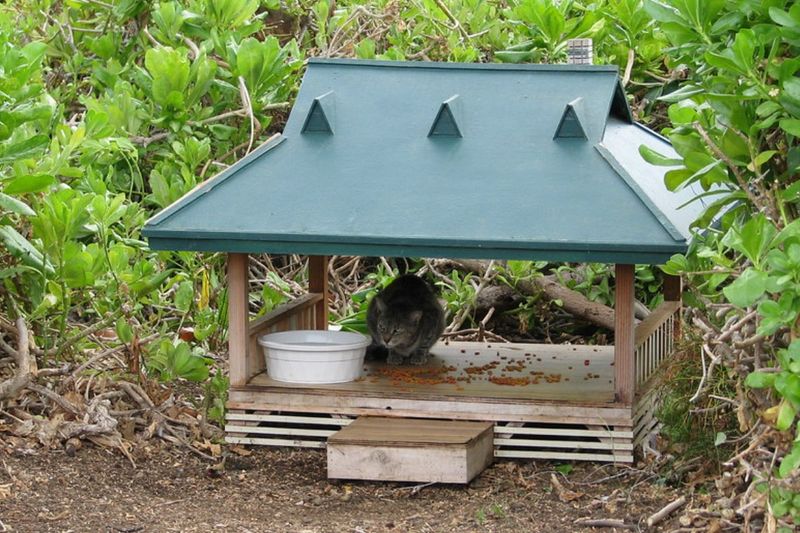
Regular mealtimes help stray cats establish a routine and build trust. Set up a dedicated spot where you’ll place food daily, ideally under some cover to protect it from rain.
Elevated feeding stations keep food away from ants and other critters. Consider using automatic feeders for times when you’re away.
Dry food works better outdoors as it won’t spoil as quickly as wet food, especially in warm weather.
3. Provide Fresh Water Daily

Water is crucial for cats, especially during hot weather. Use heavy ceramic bowls that won’t tip over easily. Place them in shaded areas to prevent rapid evaporation and keep the water cooler.
During winter, check regularly to ensure the water hasn’t frozen. Special heated water bowls can solve this problem in very cold climates.
Having multiple water stations increases the chances that the cat will find at least one when thirsty.
4. Trap-Neuter-Return (TNR)

TNR programs help control the stray cat population humanely. Borrow a humane trap from a local shelter or animal control, then work with them to have the cat spayed or neutered at low cost.
The vet will typically clip the cat’s ear tip during surgery to mark it as sterilized. After recovery, release the cat back to its original territory.
One female cat and her offspring can produce 420,000 cats over 7 years – TNR breaks this cycle while allowing cats to live out their lives.
5. Monitor For Illness Or Injury
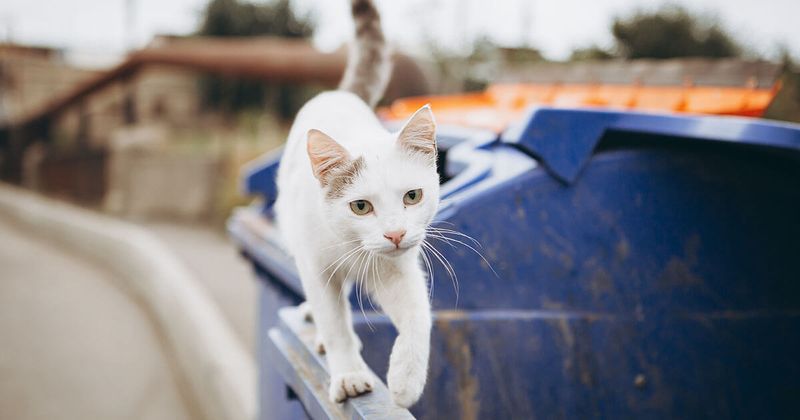
Keep an eye out for signs of trouble in your stray visitors. Limping, discharge from eyes or nose, labored breathing, or dramatic weight loss require veterinary attention.
Maintain a relationship with a vet who’s willing to treat community cats. Some animal welfare organizations offer free or low-cost medical care for strays.
Taking photos regularly helps you notice changes in appearance or behavior that might indicate health problems.
6. Set Up A Winter Warming Station
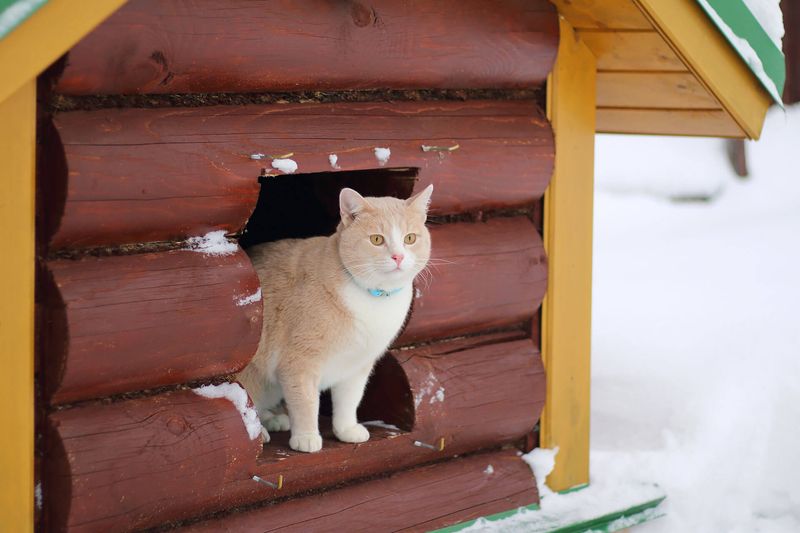
Cold weather poses serious risks for outdoor cats. Create a specialized warming zone using a heated pet mat designed for outdoor use (look for chew-resistant cords).
Place it inside a sheltered area for maximum benefit. Microwavable heating discs provide hours of warmth without electricity.
Remember that cats seek out car engines for warmth in winter – bang on your hood before starting your car to prevent injuries. Shelters with multiple cats allow them to share body heat during extreme cold.
7. Create A Flea Control System

Fleas make outdoor cats miserable and can lead to serious health problems. Food-grade diatomaceous earth sprinkled where cats lounge can kill fleas naturally.
Avoid chemical pesticides that might harm cats through ingestion during grooming. Some vets provide long-lasting flea treatments that can be administered during spay/neuter procedures.
Keeping grassy areas trimmed where cats frequent reduces flea populations. Cedar chips in resting areas can also help repel fleas naturally.
8. Install A Scratching Post

Cats have a natural need to scratch – it helps them mark territory and maintain claw health. An outdoor scratching post gives them a designated place to satisfy this instinct.
Cedar or redwood posts last longer in outdoor conditions than carpet-covered options. Position the post near where the cat spends time, perhaps near the feeding station.
Sprinkling catnip on the post initially helps attract cats to use it instead of your garden furniture or tree trunks.
9. Offer Safe Toys And Enrichment

Mental stimulation keeps outdoor cats sharp and helps burn energy. Choose durable toys specifically designed for outdoor use that won’t break down in the elements.
Avoid toys with small parts that could be swallowed. Simple items like ping pong balls or plastic practice golf balls provide hours of entertainment.
Creating structures for climbing and hiding spots made from weather-resistant materials gives cats enrichment opportunities that mimic natural behaviors.
10. Create A Cooling Station For Summer

Hot weather can be dangerous for cats, leading to dehydration and heat stroke. Set up shaded areas using tarps or umbrellas where cats can escape the sun’s intensity.
Freeze water in plastic containers and place them near resting areas – the cold surface provides relief on hot days.
Some cats enjoy lying on cool surfaces like ceramic tiles. Ensure ventilation in any shelters during summer months so they don’t become too hot inside.
11. Maintain A Garden That’s Cat-Friendly

Certain plants are toxic to cats, including lilies, azaleas, and chrysanthemums. Create a safe outdoor environment by choosing pet-friendly greenery instead.
Catnip, cat grass, and silver vine are feline favorites that can be planted in containers. Dense shrubs provide hiding spots where cats feel secure.
Avoid using chemical pesticides or fertilizers in areas cats frequent – they groom themselves and can ingest these toxins.
12. Keep A Photo Journal

Documenting the cats you care for helps in multiple ways. Regular photos allow you to notice health changes that might develop slowly over time.
The journal helps identify new cats that join the colony and track which ones might have disappeared. If you ever need veterinary care, having photos helps describe the specific cat to rescuers or vets.
Many caretakers find that photo journals become treasured records of their compassionate work with community cats.
13. Form A Neighborhood Cat Watch
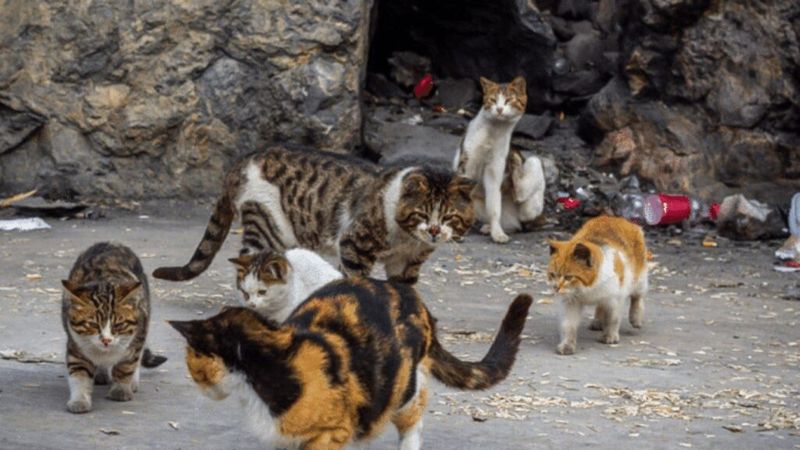
Caring for strays becomes easier when neighbors work together. Start a text group or email chain to coordinate feeding schedules and share observations about the cats’ health and behavior.
This network ensures cats don’t go hungry when someone is on vacation. It also helps identify new cats quickly and coordinate TNR efforts efficiently.
Community involvement often leads to broader support and resources for the cats, including potential adoption opportunities for friendly strays.
14. Create Safe Passage Routes

Cats often face dangers crossing busy streets or navigating hostile territories. Identify the paths cats commonly take and work to make them safer.
Simple bridges between fences or designated pathways through yards create secure travel corridors. Reflective items along these routes improve visibility at night.
Speaking with neighbors about allowing safe passage through their properties helps create a connected network of secure zones for community cats.
15. Install A Motion-Activated Camera

Wildlife cameras help monitor stray cats without disturbing them. These affordable devices trigger when they detect movement, capturing photos or videos of visiting cats.
The footage reveals important information about feeding patterns, health conditions, and which cats visit when.
You’ll learn if new cats have joined the group or if regular visitors have stopped coming. This technology is particularly helpful for shy cats that avoid human contact.
16. Provide Grooming Assistance
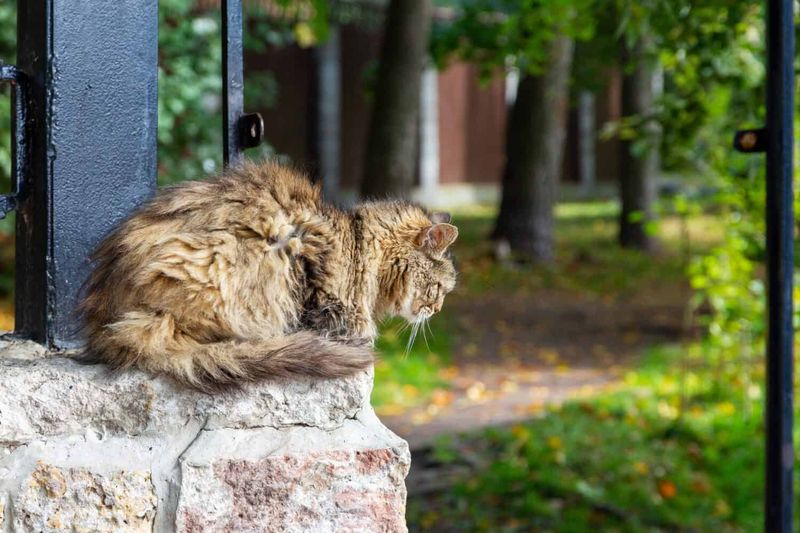
Long-haired strays particularly benefit from grooming help. Leave out pet brushes secured to posts at cat height – some cats will rub against them to self-groom.
For cats that allow closer contact, gentle brushing during feeding helps remove mats and reduces hairballs.
Severe matting may require professional help during a TNR appointment. Flea combs can identify parasite problems early before they become severe.
17. Connect With Local Rescue Organizations

Building relationships with animal welfare groups creates a safety net for your outdoor cats.
Many organizations offer resources like food donations, low-cost veterinary care, and spay/neuter services. They can also help if a cat becomes too sick or injured to remain outdoors.
Some groups provide training for community cat caretakers. Experienced rescuers can offer advice on dealing with challenging situations like extreme weather or cats that need socialization.
18. Socialize Friendly Strays For Potential Adoption
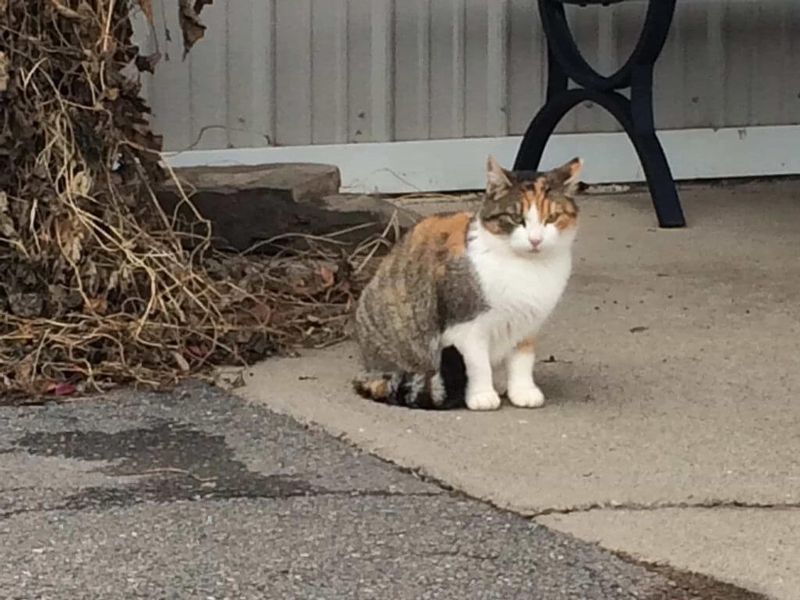
Some outdoor cats show potential for indoor life. Spend time sitting quietly near feeding stations, gradually decreasing the distance between you and the cat.
Offer treats by hand once the cat seems comfortable with your presence. Speaking softly in a consistent tone helps cats associate your voice with positive experiences.
Not all strays can be socialized, but those who respond well might eventually qualify for adoption programs that find them permanent indoor homes.






